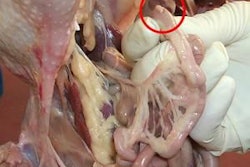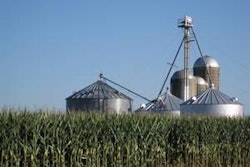As we start a new year and a new decade, lists of trends and predictions about the future are plentiful. Following are gleanings from market research insights released by the Nielsen Company relevant to the poultry business.
Research by Nielsen indicates that consumer spending adjustments adopted during the recession are likely to last in 2010. The company’s analysis lends itself to identifying opportunities in this trend for poultry marketers.
‘New normal’ may linger
While economic indicators point to a technical recovery, a number of “looming issues” are yet to be addressed. Trends identified by Nielsen include the following:
Restraint remains the new normal. Consumer confidence in the U.S. has been slower to rebound compared to other parts of the world, and the need to save money, unemployment and other economic issues continue to be top of mind. Nielsen research suggests that any return to past behavior may take some time – if it comes at all.
Value is a top priority. Store brand growth will continue, as consumers continue to cut back discretionary spending. Consumers will continue to use coupons at a rate not seen in many years. Manufacturer coupon redemptions are up 26%, according to one source.
Avoid ‘low price’ trap
These factors have implications for retailers and their poultry suppliers. First of all, a focus on low prices at the expense of all other factors threatens margins. So far, consumers have traded across categories, preferring chicken, turkey and pork to beef and seafood. Nielsen suggests that value messaging must also include some point of differentiation beyond pricing. Poultry companies and retailers, for example, that “drive the recession wave” and take an active role in innovation and ad spending are likely to be the winners.
Smart marketers, the company says, are differentiating brands through innovation – with new products, new flavors, new packaging and with marketing/media campaigns that include social media to build awareness and product trial. Brands that fail to innovate may also fail to win buyers back from store brands, the company’s analysts say.
Assortment opportunities
Opportunities may also be created when larger national and regional grocers reduce product assortment. A leading example of this is Wal-Mart’s “Project Impact” with its cleaner aisles and limited assortment. Some poultry marketers – caught in the trap of greater store brand focus and assortment optimization – may choose to forge alliances with key retailers who attempt to set themselves apart with a wider selection of products. Other poultry marketers may enter or step-up efforts as store brand suppliers. The squeeze on in-store assortment could also create openings for direct-to-consumer sales of premium, high-end poultry products.
‘Natural’ category is bellwether
What will U.S. consumers do when stronger economic recovery occurs? While consumers still seem relatively unconvinced there will be dramatic economic recovery soon, when the economy does improve consumers will focus on health and wellness priorities, according to Nielsen. This should bring an uptick in sales of “organic” and “natural” poultry and entrees.
Nielsen research indicates, however, that consumers’ fundamental spending adjustments are likely to last in 2010. For example, almost one-third of consumers (30%) say that they will use credit less even when conditions improve and 19% say that they intend to save more money.
Poultry marketers can turn these challenges into opportunities by avoiding a ‘low price’ focus and through the development of innovative products and marketing programs. Companies should also be ready to exploit opportunities presented in the marketing channel.


















